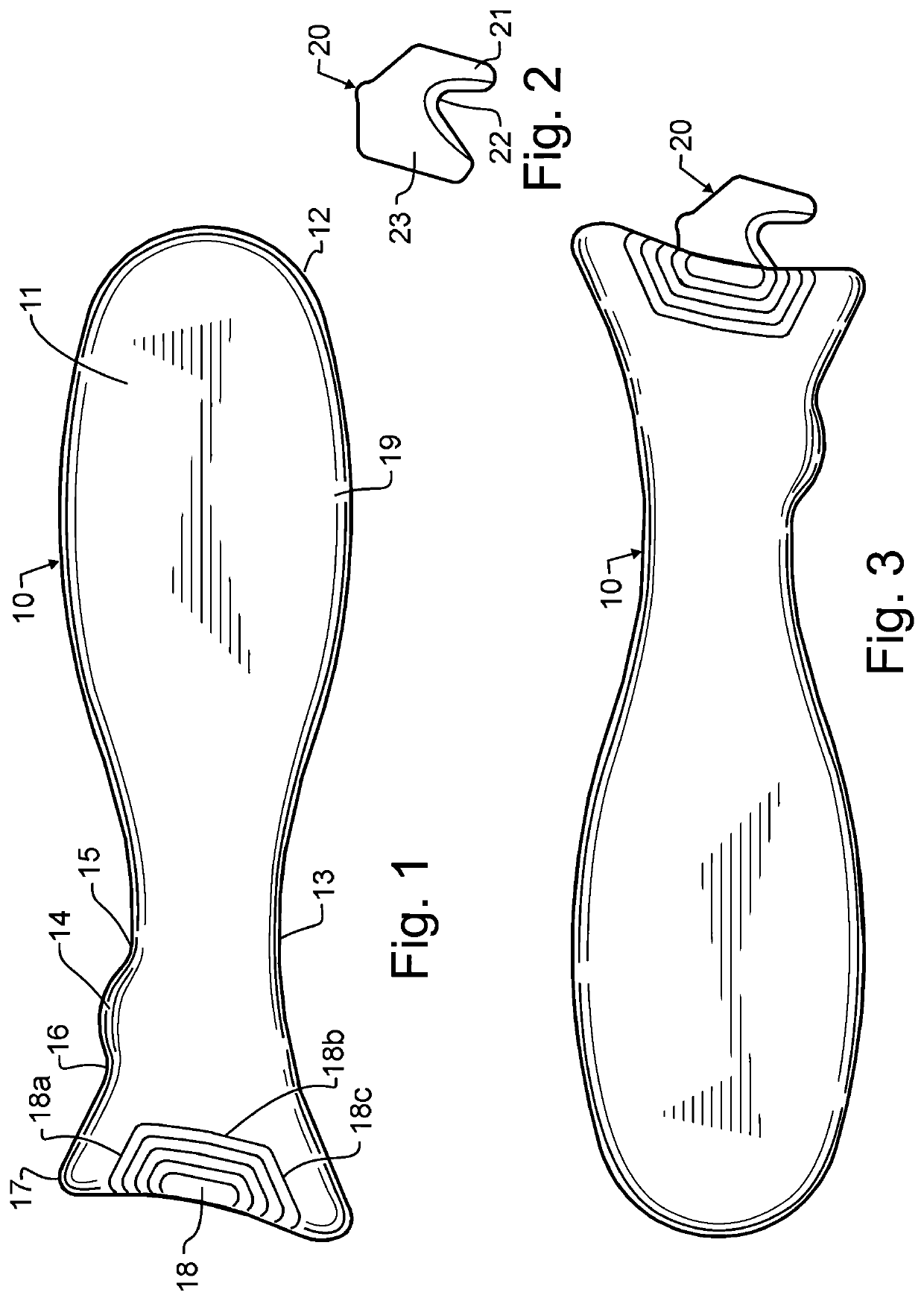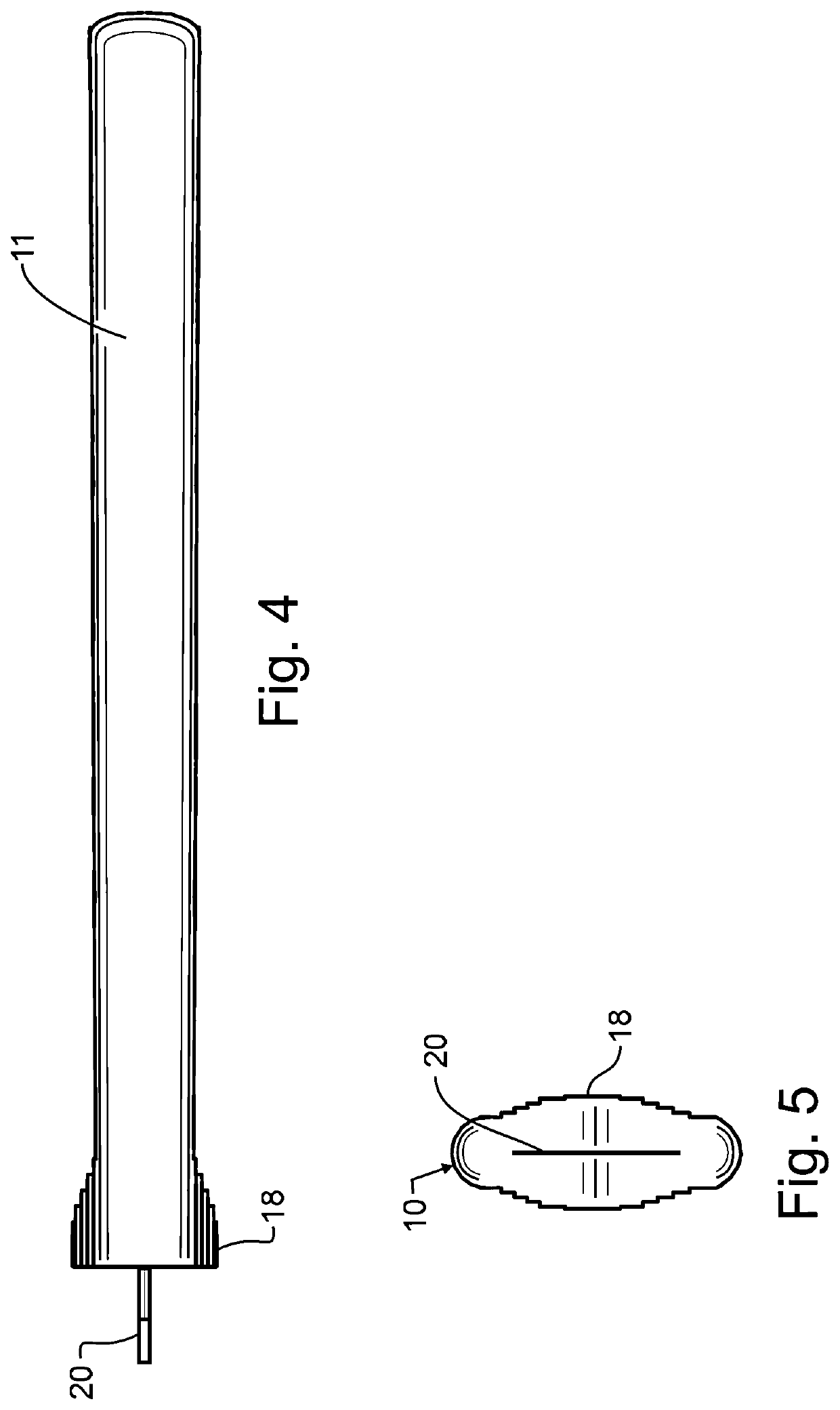Sanitary knife
- Summary
- Abstract
- Description
- Claims
- Application Information
AI Technical Summary
Benefits of technology
Problems solved by technology
Method used
Image
Examples
Embodiment Construction
[0028]Manifested in the preferred embodiment, the present invention provides a safety knife handle 10, a safety knife blade 20, and a combination handle 10 and blade 20 that together form a safety knife 1.
[0029]FIG. 1 illustrates a preferred embodiment handle 10 that forms the primary body of safety knife 1. As illustrated therein, a smooth and contoured palm portion 11 is defined by a pair of spaced apart, generally parallel, and generally planar major surfaces designed to be cradled comfortably and conveniently within the palm of a hand. Rounded end 12 facilitates this cradling by most preferably fitting within the oblique arch between the thumb and little finger, roughly between the abductor pollicis brevis muscle of the thumb and the abductor digiti minimi muscle of the little finger. This ensures that rounded end 12 will nestle with the edge pressing comfortably and yet securely into the palm of the hand.
[0030]A slightly narrower neck region 13 is adapted to be grasped by a per...
PUM
 Login to View More
Login to View More Abstract
Description
Claims
Application Information
 Login to View More
Login to View More - R&D
- Intellectual Property
- Life Sciences
- Materials
- Tech Scout
- Unparalleled Data Quality
- Higher Quality Content
- 60% Fewer Hallucinations
Browse by: Latest US Patents, China's latest patents, Technical Efficacy Thesaurus, Application Domain, Technology Topic, Popular Technical Reports.
© 2025 PatSnap. All rights reserved.Legal|Privacy policy|Modern Slavery Act Transparency Statement|Sitemap|About US| Contact US: help@patsnap.com


